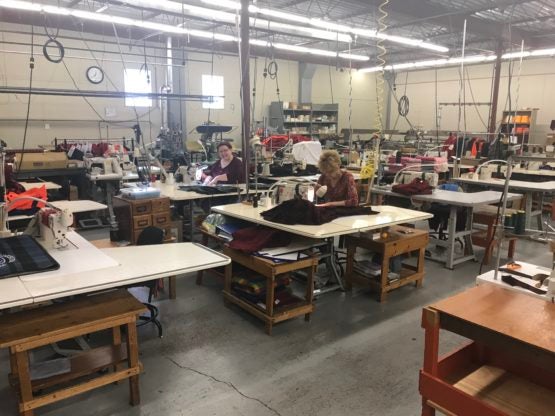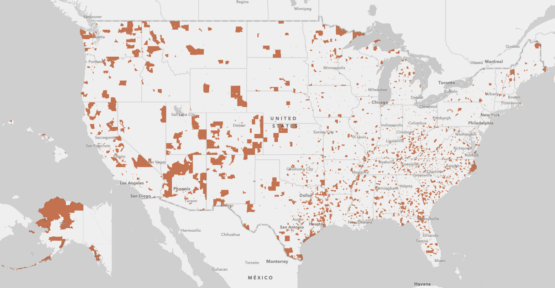Grad student takes to the road to explore how low-income communities could benefit from new tax law
This summer, graduate student Cody Evans is exploring low-income areas targeted by a new federal program for economic investment to learn what it takes for these areas to succeed in the program.
A student at the Graduate School of Business is among the researchers intrigued by a little-known provision in the tax code enacted last December that may benefit parts of the country that are struggling economically. It’s a tax incentive meant to attract long-term investment to low-income areas, dubbed “opportunity zones.”
This summer, Cody Evans has returned to his home state of Minnesota, where he’s visiting some of those communities to determine what it will take for them to succeed in the program.

“I think this represents an interesting ‘boots-on-the-ground’ supplement to the academic research I have been undertaking during the school year.”
–Cody Evans
MBA/MS (Environment and Resources) Candidate
“One of the reasons Minnesota is interesting is because it is, in many ways, a microcosm of the country as a whole. The Twin Cities look and feel a lot like the places that are doing well in the economy today,” Evans says. But while the greater Minneapolis-St. Paul area is home to Fortune 500 companies, cultural opportunities, colleges and universities, other parts of the state haven’t experienced the same economic vitality and may benefit from the law, he says.
The provision, which received bipartisan support on Capitol Hill, encourages investors to redirect capital gains toward low-income areas with the intended effect of stimulating job growth. Investors, in turn, will receive discounts on capital gains taxes as well as a tax deferral on their realized gains. All gains on the opportunity zone investment can be realized tax-free if that investment is held for more than 10 years. The federal capital gains tax rate is typically more than 23 percent, which means savings on a successful investment in a designated opportunity zone could be substantial.
More than half of those zones in Minnesota exist outside of the bustling Twin Cities, so Evans ventured into the rural parts of the state. “I wanted to start in northern Minnesota to see what’s happening in some of these smaller towns that haven’t seen those same gains in recent years,” he says.
He recently visited the town of Bemidji, about 100 miles from the Canadian border and home to about 15,000 people. Bemidji’s economy has, historically, been driven by agriculture and small family-owned businesses, but its future is uncertain.

Business is booming at this woolen mill in Bemidji, Minnesota, which Evans says could benefit from new investment. (Image credit: Cody Evans)
“Now you look at it and wonder, what’s going to happen here, in a world where farming has gone from a family business to a corporate business, and the next step is probably automation,” says Evans.
But Evans believes there’s potential in Bemidji, where business owners tell him they are optimistic about the possibility that the program could revitalize their communities. One example is a local woolen mill that’s been owned by the same family for four generations. Business at the mill had dipped in recent years, but after expanding the company online, the manager says it now has a six-month backlog in orders.
“The internet has saved us,” the manager told Evans. It is businesses like this that could potentially attract investors looking to back a new venture, while cutting their tax bill and hopefully helping lift a struggling community.
Through his research, Evans says he has identified attributes that opportunity zones in smaller, rural areas need to succeed in the program. They include a college or university, young people entering the workforce, a strong local culture, a hospital and solid transportation infrastructure, such as highways and airports, all of which exist in Bemidji.
Evans says that in many instances, leaders in these communities are lacking investment in specific projects. “This incentive, I think, could prove to be the thing that helps tip those projects over the edge and make them successful.”

This map highlights the areas nationwide that have been designated “opportunity zones.” (Image credit: Nick Pez)
His fieldwork is the continuation of research he and MBA program classmate Hanna Tian started at Stanford under Rebecca Lester, assistant professor of accounting. Together, they took an academic look at the tax provision to study the law’s features, selling points and shortfalls. Evans says his independent summer investigation is a grassroots effort to understand how the provision might work.
“I think this represents an interesting ‘boots-on-the-ground’ supplement to the academic research I have been undertaking during the school year with fellow Stanford faculty and students,” he says. “It also highlights the sort of thing you can do with your summer that furthers what you’ve been working on during the school year, but that you can’t do unless you have the time to do it.”
Evans is chronicling his research and what he’s learning about these opportunity zones on Twitter @codyevans.
